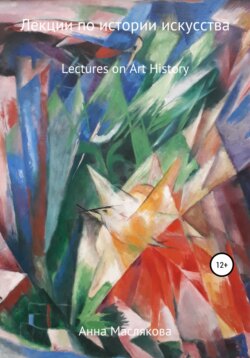Читать книгу Лекции по Истории Искусства. Lectures on Art History - Анна Ивановна Маслякова - Страница 5
Lecture two
ОглавлениеReflections on Mirrors in Art
It is a well-known fact that for many centuries mirror was a sign of wealth. And it was believed that mirrors of the highest quality could be produced only in Venice. For instance, at the Louvre Museum there is a Mirror of Maria Medici, incrusted with precious stones, which was presented to her by Venetian masters.
Firstly, mirror allows you to see things from an unusual angle adding new meanings and making familiar things look ambiguous. And I find it exceedingly fascinating to take pictures of reflective surfaces, such as glass façades of the buildings, or the expanses of water, for it helps to see the objects, reflected in them, differently giving an opportunity to get closer to understanding the World not as it appears for us, but as it is (see Fig. 3.). Let us mention in this regard “The Arnolfini Portrait” by Jan van Eyck, located at the National Gallery in London, depicting a mirror showing two men entering the room; “Las Meninas” by Diego Velazquez, which is rightfully considered the gem of the collection of the Prado Museum, representing a mirror, hanging of the wall, that reflects the figures of the parents of the Infanta Margaret Theresa of Spain, depicted in the foreground, – the King Philip V and his wife Marianna of Austria. Moreover, the conversation that seems to be transpiring between the barmaid and the gentleman, represented in Eduard Manet’s “A Bar at the Folies-Bergèr”, is revealed to be an optical trick since the man stands outside the painter’s field of vision, to the left, and looks away from the barmaid, rather than standing right in front of her.2 And similar technique was used by Olafur Eliasson in his installation “Pentagonal Mirror Tunnel” exhibited at the Emma Museum in Espoo in 2017.3
Nevertheless, it was during the Baroque époque that mirrors acquired particular importance creating the illusion of a much larger space and reinforcing the effect of surprise which, as you know, was essential for the Baroque aesthetics. Suffice it to mention the Hall of Mirrors in the Palace of Versailles demonstrating that France could rival the Venetian monopoly on mirror manufacturing, or the Audience Room of the Grand Palace in Peterhof designed to the order of the Emperor Peter I to surpass the grandeur of the Versailles (see Fig. 2.).
Fig. 2. The Audience Room of the Grand Palace in Peterhof.
Рис. 2. Аудиенц-зал в Большом Дворце в Петергофе.
On the one hand, mirror could give its owner “superpowers” – for instance, Perseus killed the Gorgon Medusa using a mirror, and in Peter Paul Rubens’ painting “Perseus and Andromeda”, located at the Hermitage Museum in St. Petersburg, one can see the hero holding his shield with the head of Medusa on it. One can even travel with the help of a mirror, as shown in Lewis Carroll’s novel “Through the Looking Glass” telling a story of a girl who slipped through a mirror to another world. Besides, a mirror can warn of danger, just like in the movie based on Agatha Christie’s story “In a Glass Darkly” telling about a man who “witnessed” a murder of a young girl reflected in a bedroom mirror.
Fig. 3. The reflection of a statue in a mirror, Repin Estate Museum.
Рис. 3. Отражение статуи в зеркале, Музей-усадьба
И.Е. Репина.
It should be noted that many prominent film directors used mirrors in their films so as to enrich the symbolism of the plot – for instance, the “Mirror Talk” from Jean Luc Godard’s move “Breathless” in which the protagonists examine their faces in the mirror while chatting; or Andrei Tarkovsky’s film “Mirror” showing Alexei, the main character, looking intently at his reflection in the mirror. Yet, on the other hand, the excessive use of the mirror may lead to a negative effect – let us use as an example “Narcissus” by Caravaggio who, according to Ovid’s “Metamorphoses”, fell in love with his own impression, and died of his passion, and, after that, ended up in Dante’s “Inferno”. In this regard one should also mention the fate of the Evil Queen from the “Snow White and Seven Dwarfs” – longing to be “the fairest of them all”, she would turn to her Magic Mirror every morning to make sure that her goal was achieved, and that ultimately led to her death.
A broken mirror is no less dangerous – for instance, the Snow Queen shattered the glass into thousands of small pieces and made it so that the fragments fell into the eyes of people, as a result of which a person was evil, and hated the beautiful while the fragment was in their eyes. And in the film “The Mirror Crack’d From Side to Side”, inspired by Agatha Christie’s story with the same title, Mrs. Bantry, when recounting to Miss Marple the events that occurred on the day of the murder, uses the lines from Alfred Tennyson’s poem “The Lady of Shalott”, in which a curse falls upon the heroine of the poem when the mirror cracks, to describe the look she observed on Marina Gregg’s face.
It is possible that the secret of the attractiveness of mirrors will never be completely unraveled. After all, no matter how much we look in the mirror, we see not how others perceive us, but our “mirrored” reflection.
2
Park, M, “Manet's Bar at the Folies-Bergère: One Scholar’s Perspective”, accessed September 13, 2022, https://www.getty.edu/art/exhibitions/manet_bar/looking_glass.html.
3
“Pentagonal Mirror Tunnel”, accessed September 13, 2022, https://olafureliasson.net/archive/artwork/WEK110340/pentagonal-mirror-tunnel/.
